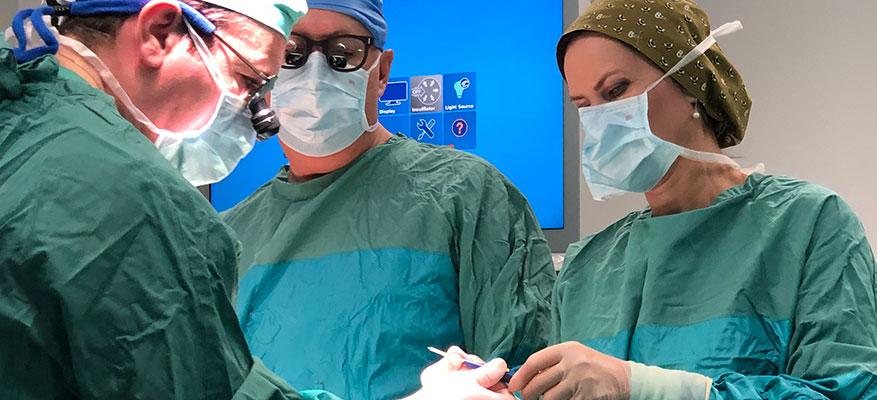
Coronary Artery Bypass Grafting is the most common heart operation, safe and effective.
Coronary artery bypass grafting aims to bypass the blocked parts of the coronary arteries in order to achieve better perfusion of the heart muscle. Bypass is achieved by suturing a graft between the aorta and diseased arteries, just below the blocked point.

One or more bypasses may be needed depending on the number of stenoses and the extent of the heart muscle they are affecting.
The operation is performed on the beating heart, without the use of extracorporeal circulation. The grafts we use are mainly arterial (internal thoracic arteries) that we take from inside the patient's chest. Arterial grafts are preferred over venous ones because of their long term patency rates.
Coronary Artery Bypass Grafting surgery carries a less than 1% risk for the majority of patients, while for more severe cases, such as when the myocardium has been severely damaged by previous heart attacks or the patient suffers from concomitant diseases, the risk is higher.

